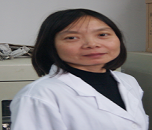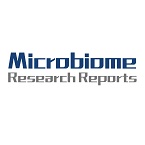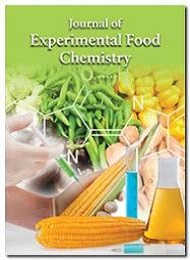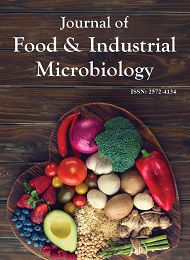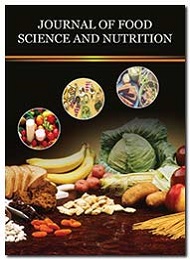Theme: Awakening the Innovation of future food technology
Food Chemistry Congress-2023
- FOOD CHEMISTRY CONGRESS-2023
- About Food Chemistry Congress
- Why to Attend??
- Who can attend?
- Session and Tracks
- Past Conference Report
- Market Analysis
Food Chemistry Congress-2023
June 19-20, 2023 | Rome, Italy
Conference Series LLC Ltd welcomes you to attend the 4th European Food Chemistry Congress to be held in Rome, Italy on June 19-20, 2023. The theme for the conference this year is Awakening the Innovation of future food technology.
Details of FOOD CHEMISTRY CONGRESS-2023 Conferences in Canada
|
Conference Name |
Place |
Date |
|
Rome, Italy |
June 19-20, 2023 |
Conference Series LLC Ltd cordially invites all the participants across the globe to attend the “4th European Food Chemistry Congress” during June 19-20, 2023, Rome, Italy.
The “4th European Food Chemistry Congress” will be held in June 19-20, 2023 at Rome, Italy with the topic “Awakening the Innovation of future food technology”. The Food Chemistry Conferences Committee extends its warm greeting to all attendees. Participating in FOOD CHEMISTRY CONGRESS 2023 will give you a fantastic opportunity to interact with top-tier nutrition specialists, food chemists, clinical nutritionists, dieticians, and industry experts, opening a channel for partnerships and collaborations.
Conference Series llc LTD publishes 700+ open access journals with over 50000 eminent individuals, fictional scientists as editorial board members and reviewers and organizes 1000+ global events annually across the USA, Europe, and Asia-Pacific regions with support from more than 1000 additional scientific societies.
The two-day FOOD CHEMISTRY CONGRESS-2023 Conference features workshops, symposiums, and unique keynote talks from eminent speakers who go above and beyond in the fields of food chemistry and nutrition. As we facilitate a Poster Award Competition and Young Research Forum at the meeting venue, this Food Chemistry Conferences also encourages the active participation of young students and talented understudy groups from universities and research labs, providing an ideal space to share the latest advancements in the Nutrition and Dietetics research and upcoming analysts and sprouting researchers.
Importance and Scope:
Leading academic scientists, researchers, doctors, professors, research fellows, directors, deans, post-graduates in nutrition and food chemistry, food chemistry professionals, health care providers, nutrition specialists, food chemistry specialists, nutrition entrepreneurs, nutrition faculty, food faculty, nutrition academicians, food chemistry academicians, students, and business delegates are invited to participate in food chemistry conferences in order to exchange and share the latest information.
We have dealt with a number of innovative Nutrition events and Nutrition and Food Chemistry gatherings that created amazing relationships and brought associations and affiliations of professionals in Food Chemistry: acrylamide is generated in the Mallard reaction together. Meetings, conferences, and events focused on nutrition are essential for community members to be healthy and strong throughout their lives. To promote the knowledge about how to stay fit and healthy for the rest of our lives, nutrition conferences, events, and meetings are crucial in relation to the successful global research.
The Food Chemistry Congress-2023 will provide a significant forum for specialists in the fields of nutrition and food sciences to discuss the most recent research and difficulties in the field. Registered dieticians, other healthcare professionals, researchers, and students working in the subject will have a specific platform at Food Chemistry Congress-2023 to consciously share their perspectives and understandings in front of a sizable international audience. This nutrition conference, or rather all nutrition conferences, events, and gatherings, will aid in the networking of various minds in nutrition and dietetics throughout the globe, facilitating B2B relationships amongst professionals in addition to academicians. The business that produces nutritional products and supplements is able to display its goods at the Nutrition exposition and expo.
Conference series LLC Ltd is confident that the 4th European Food Chemistry Congress will provide a forum for discussion of issues with nutrition and dietetics as well as other difficulties encountered in the field of food science. Additionally, it will assist in promoting awareness and tackling one of humanity's most dangerous challenges.
Scientists, researchers, doctors, professors, research fellows, directors, deans, post-graduates in nutrition and food chemistry, food chemists, health care providers, nutrition specialists, food chemist specialists, nutrition entrepreneurs, faculty from the fields of nutrition and food, faculty from the fields of food and nutrition, academics from those fields, students, and business representatives are all welcome at the Food Chemistry Congress-2023. It is an event where people come together to discuss issues that are important to them and to learn more about them.
Benefits Food Chemistry Congress-2023:
- Abstracts that are accepted will be published with a DOI in Journal of Nutrition and Food Sciences.
- International collaboration: When exchanging and trading ideas
- A Special Chance for Sponsors and Advertisers at This International Conference
- Stay current on developments in your field's research
- Develop as a presenter and researcher
- Request input on your research.
- Get to know your peers by meeting them.
- Become more visible in your industry
- Share the results of your research with experts in your field.
- Keep up with subjects and trends.
- Encourage innovation and creativity in the business world.
Track 1: Food Chemistry
Food chemistry is the study of both biological and non-biological elements of food, chemical processes and their interactions. It is also related to organic chemistry as it deals with the identification and quantification of components of food, such as carbohydrates, lipids, proteins, water, vitamins, and dietary minerals.
It is the study of chemical processes and interactions of all biological and non-biological components of foods. Food chemistry is concerned with analytical, biochemical, chemical, physical, nutritional, and toxicological aspects of foods and food ingredients. It also involves the study and development of food additives that can be used to preserve the food. It overlaps with biochemistry in that it deals with the food components. Food chemistry can be applied in the analysis of dietary content to monitor or improve nutrition, or the determination of levels of contaminants to ensure food safety.
- Nutrifood Chemistry
- Agronomy
- Agricultural and Food Chemistry
- Flavor Chemistry
- Agricultural Chemical Science
It also involves the research and synthesis of nutrients and preservatives, as well as other additives that can be used to preserve the quality of food or modify its color, flavor, and taste. Food chemistry knowledge aids in the creation of proper food handling techniques as well as good manufacturing practices.
Track 2: Food Drug Analysis
Drug is a medicinal/ chemical compound that is prescribed by the professional health workers to suppress or aid in treatment of a certain disease or health condition. Efficacy of a drug depends upon the body mass index, severity of disease or dietary consumption. Food and Drug interaction occurs when consumption of a certain food constituent changes the behavior of a drug, causing the effects to be increased or reduced, or creating a new effect that none of the drugs could create on its own. These interactions can occur as a result of inadvertent misuse or a lack of understanding of the active ingredients in the relevant substances. Connections between food and medications can unintentionally reduce or augment the medication's effect.
Track 3: Food Additives
Food additives are substances that are added to food to enhance or preserve its safety, freshness, flavor, texture, or appearance. A few additional substances have been used for a short period of time, such as pickling (with vinegar), salting (as with bacon), preserving desserts, or using Sulfur dioxide in the same way as with drinks. Food additives are only justified where there is a technical need for them, they do not deceive consumers, and they serve a well-defined technological purpose, such as preserving the nutritional quality of the food or enhancing the food's stability. Flavoring agents are also used to improve the taste and flavor of foods. Adding flavor to them necessitates certain restrictions, namely, they must be applied in compliance with official guidelines. Many researchers and organizations have now accepted and built on this numbering scheme to uniformly distinguish all additional substances, regardless of whether they are licensed for use.
Track 4: Food Nutrition and Health
Food intake and nutrition control are also important for good health. Protein, carbohydrates, fat, fiber, vitamins, minerals, and water are the six types of nutrients that the body requires from food. Food intake, absorption, assimilation, biosynthesis, catabolism, and excretion are all included. An organism's diet is the food it absorbs, which is primarily dictated by food supply, processing, and palatability. A balanced diet involves food preparation and storage methods that protect nutrients from oxidation, heat, and leaching while also lowering the risk of food-borne illness. A poor diet can affect one's health by causing deficiency diseases like blindness, anemia, scurvy, preterm birth, stillbirth, and cretinism, as well as health-threatening conditions like obesity and metabolic syndrome, and chronic systemic diseases like cardiovascular disease, diabetes, and osteoarthritis.
Track 5: Food Nanotechnology
Food nanotechnology is a zone of rising interest and opens up an entire universe of new conceivable outcomes for the sustenance business. Nanotechnology involves the manipulation of microscopic matter that ranges from 1 to 100 nm in size. Because food and water are naturally made up of particles that are on the nanometer scale, engineered nanoparticles are able to penetrate these products easily based on their similar properties. These particles can act as a whole unit by performing similar transportation functions that prove useful in almost every industry, particularly involving food products.
- Nano Encapsulation
- Organized Nano Sized Additives
- Nano Coating
- Nano Sized Agrochemicals
Track 6: Food Microbiology
Microorganisms are generally considered to include bacteria, yeasts, fungi and some protozoa. Bacteria especially, but also yeasts and fungi, are ubiquitous. Different species of bacteria are found growing in all natural and man-made environments – from the Antarctic, through refrigeration at 1–5â—¦C, hot springs at the boiling point of water (100â—¦C) to hypothermal vents where high pressure allows growth at 160â—¦C and even higher temperatures found deep in the ocean floor. Microorganisms important to the food industry, including viruses, bacteria, yeasts, protozoa and worms. Microbial growth is examined and methods of measurement are discussed. The bacterial agents of food borne illness are described, including Clostridium Botulinium.
- Food Mycology
- Microbial Ecology
- Food Contamination
- Food Utilization
- Microbial Aspects of Food Spoilage
Track 7: Agriculture and Resource Economics
Agriculture and Resource Economics examines the use and distribution of food resources, with the aim of applying economic theory to the production and distribution of agricultural commodities in order to improve these processes. Agriculture is the oldest practice that has contributed to the civilization of human species and is still the largest sector to provide livelihood to around one-third population in the world.
- Horticulture
- Technical transformations in agricultural practices
- Organic Farming
- Food and consumer economics
- Agronomy
- Crop modeling and plant breeding
Track 8: Food and Nutrition
Nutrition begins with food components. It is the process by which the body nourishes itself by transforming food into energy and body tissues. The science of nutrition concerns everything the body does with food to carry on its functions. Food provides essential substances called nutrients. The body needs these nutrients to help it make energy; to grow, to develop, repair, and maintain its tissues, and to keep its different systems working smoothly. It is the science that interprets the interaction of nutrients and other substances in food.
- Nutritional Biochemistry
- Nutritional Immunology
- Plant Nutrition
- Malnutrition
- Clinical Nutrition
Track 9: Food Science and Technology
Food science and technology involves the application of basic sciences and engineering to study the physical, chemical, and biochemical nature of foods and the principles of food processing. Whereas food technology deals with the production processing that makes the food. Food technologists apply their knowledge of food science to operate, design and manage the facilities and equipment involved in the processing and storage of foods.
- Food Standards
- Sustainable Technologies
- Integrated Food Functionality
- Food Technology
- Food Informatics
Track 10: Food Engineering
Food designing is a multidisciplinary field includes an extensive variety of exercises, for example, sustenance handling, nourishment hardware, bundling, fixing assembling, instrumentation, and control. It includes the idea of comprehension of thermodynamics, response energy, and transport wonders connected to nourishment forms .It additionally to utilize present day devices, innovation, and learning, for example, computational materials science and nanotechnology, to grow new items and procedures. New bundling materials and procedures are being created to give more assurance to nourishments, and novel safeguarding innovation is developing.
- Agricultural Engineering
- Sanitation Technologies
- Modern Packing
- Chemical Engineering
- Food Product Shelf Life
Track 11: Hydro Colloids in Food Industry
Hydrocolloids are gums that are added to foodstuffs with a specific end goal to control their useful properties, for example, thickening or gelling. These are typically disengaged from plants. Hydrocolloids are utilized as a part of specialized and managed applications to thicken and to settle plans. In handled nourishments, they are pervasive – no other gathering of fixings contributes more to thickness, surface, and body like hydrocolloids do.
- Food Stabilizers
- Food Emulsifiers
- Hydro gels
- Hydrocolloid Polymers
- Plant Hydrocolloids
- Food Stabilizers
Track 12: Food Processing
Food processing includes various methods and techniques used to transform the raw ingredients for the purpose of human consumption. The processing of food can be done by physical means or chemical means. It typically involves activities such as mincing, macerating, liquefaction, emulsification Innovation in food production, processing and new product development can offer benefits for consumers and the environment. Usually food can be processed by three methods on-off production, batch production, mass production. Processing of food enables the removal of toxins, ease in marketing and distribution tasks. It also enables transportation of delicate perishable foods across long distances and makes many kinds of foods safe to eat by de-activating spoilage and pathogenic micro-organisms.
- Fermentation Techniques
- Food Packaging
- Pasteurization
- Canning
- Freeze Drying
Track 13: Food Rheology
Food rheology is the study of properties of food components. It is concerned with the deformation and flow of the raw materials, intermediate and final products of food industry. Food components can be classified according to its rheological state such as solid, gel emulsion, liquid. The most important factor in food rheology is consumer perception of the product. The importance of rheology in food components means that is essential for food scientists to have analytical techniques to measure the properties.
- Psych Rheology
- Process Engineering
- Polymer Physics
- Quality Control
Track 14: Food Physical Chemistry
Food physical chemistry is the branch of food chemistry which involves the physiochemical principles of the reactions and conversions that occur during the manufacture, handling, and storage of foods. Physical properties of food play a key role altogether fields wherever trendy technological processes are applied for the generation of food raw materials and therefore the production of food. The determination of physical properties of food and connected product are a pre-requisite for designing, production engineering and automation processes in today’s food, pharmaceutical and cosmetics industries furthermore as altogether connected internal control activities.
- Food Enzyme Kinetics
- Cross Linking in Food
- Immobilized Enzymes and Cells
- Food Formulations
- Microencapsulation
Track 15: Food Toxicology
Food toxicology is an individual field that assesses the impacts of constituents of the mind boggling compound network of the eating regimen on the exercises of harmful specialists that might be common endogenous items or might be presented from polluting creatures or from sustenance generation, handling, and arrangement. Sustenance toxicology is increases crucial consideration as nourishment production network is ending up more worldwide in beginning and any tainting or poisonous indication may cause serious antagonistic wellbeing impact. It covers the various aspects of food safety and toxicology.
- Food Allergy
- Food Safety Assessment
- Food Intolerance
- Genetically Modified Food
- Food Contaminants
- Edible Nano Coatings
Track 16: Food Analysis
Food examination the prepare dealing with the headway, application and examination of indicative techniques for portraying the properties of substances and their constituents. Nourishment things are explored for a collection of reasons, e.g., consistence with legitimate and naming necessities, assessment of thing quality, affirmation of nutritive regard, area of contamination, inventive work. Food investigation takes a gander at the tangible, synthetic, microbiological and physical properties of sustenance and drink, and is an essential piece of value confirmation, administrative consistence and item improvement.
- Food Inspection
- Grading of Food
- Characterization of Final Product
- Quality Management
- Monitoring Food Properties
Track 17: Food Waste and Recycling
Food Recycling is the process to change food waste materials into new useful products to prevent waste of potentially useful materials. The main use of recycling process is to reduce consumption of fresh raw materials and also reduce the energy usage and reduce air pollution and also reduce water pollution. Composting is also one of the methods to prevent food wastage. By using composting, we can convert waste food materials into organic matter which is useful as a medium to growing plants.
- Agricultural Waste Recycling
- Sustainable Waste Management
- Sustainable Waste Management
- Waste Management Techniques
- Compositing
Track 18: Food Adulteration
Food contamination is the procedure in which the nature of nourishment is brought down either by the expansion of substandard quality material or by extraction of important fixing. It not just incorporates the deliberate expansion or substitution of the substances yet natural and compound tainting amid the time of development, stockpiling, preparing, transport and circulation of the sustenance items, is likewise in charge of the bringing down or corruption of the nature of nourishment items. Adulterants are those substances which are utilized for making the nourishment items perilous for human utilization.
- Intentional Adulterants
- Microbial Adulteration
- Economic Adulteration
- Deleterious Substances
- Incidental Adulteration
Track 19: Food Authenticity and Integrity
Food authenticity and integrity refers to the genuineness and intactness of food products. Food fraud is a major concern not only for consumers, but also for producers and distributors. . The food supply chain network has become very extensive, which increased its susceptibility to fraud. Today’s food products and ingredients may be sourced from a single farm or from producers and manufacturers worldwide. Labeling regulations exist to verify the authenticity and origins of these products as they are exported around the globe. Regrettably, recurring food contamination scandals show that there is always room for error, whether intentional, adulterated, or fraudulent.
- Food Safety
- Consumer Regulation
- Food Commodity
- Food Traceability
Track 20: Advanced Food Processing Technologies
Food handling innovations are a basic connection in the natural way of life. Shoppers' interest for expanded quality guidelines has impelled the look for new and less forceful handling advancements', which allow more prominent maintenance of normal taste. As a result, negligible preparing procedures rose with the target of supplanting conventional safeguarding strategies with the goal of broadening timeframe of realistic usability, without the negative impacts caused by extreme warming. Propelled sustenance preparing advances is an exhaustive treatment of the present condition of learning on nourishment handling innovation. The application of heat is both an important method of preserving foods and a means of developing texture, flavor and color.
- Biosensors for Food Quality
- Thermal Technology
- Quality Optimization
- Freezing
- Non Thermal Technology
Track 21: Organic Chemistry
Organic chemistry is a branch of chemistry that studies the structure, properties and reactions of organic compounds, which contain carbon in covalent bonding. Study of structure determines their structural formula. Study of properties includes physical and chemical properties, and evaluation of chemical reactivity to understand their behavior. The study of organic reactions includes the chemical synthesis of natural products, drugs, and polymers, and study of individual organic molecules in the laboratory and via theoretical (in silico) study.
The range of chemicals studied in organic chemistry includes hydrocarbons (compounds containing only carbon and hydrogen) as well as compounds based on carbon, but also containing other elements, especially oxygen, nitrogen, sulfur, phosphorus (included in many biochemicals) and the halogens. Organometallic chemistry is the study of compounds containing carbon–metal bonds.
In addition, contemporary research focuses on organic chemistry involving other organometallics including the lanthanides, but especially the transition metals zinc, copper, palladium, nickel, cobalt, titanium and chromium.
- Functional groups
- Aliphatic compounds
- Aromatic compounds
- Heterocyclic compounds
- Polymers
- Biomolecules
- Small molecules
- Fullerenes
Track 22: New and rapid methods for food chemistry
Flow injection immunoassay, enzyme immunoassay, enzyme-linked immunosorbent assay, and other serological methods are known for their speed, high-throughput capacity, and possibility of precise quantification of the target, whereas conventional culture-based enumeration tests for the detection of microorganisms have become obsolete for real-time applications because they are labor-intensive and time-consuming. Even in chemical analysis, the development of quick and simple methods is starting to take precedence over time-consuming, traditional approaches. One of these sample preparation pre-treatment assays is based on the QuEChERS method, whose acronym encapsulates its benefits (quick, easy, cheap, effective, rugged, and safe). The work by Nagoya and Tölgyessy revealed the validation of a quick and easy approach for the detection of a subset of priority H2SO4 halogen contaminants (six polybrominated diphenyl ethers and eight organochlorines) in nine distinct fish species. It was stated how to prepare a modified QuEChERS sample before performing a gas chromatography-triple quadruple tandem mass spectrometry study. The used method, in particular, demonstrated certain benefits in terms of simplicity, speed, and high extracts clean-up efficiency, and good sensitivity.
The success of the 3rd European Food Chemistry Congress has given us the prospect to bring the gathering one more time in Rome, Italy during June 19-20, 2023. Food Chemistry Congress-2023 meeting engrossed a vicinity of comprehensive discussions on novel subjects like Food Chemistry, Food Drug Analysis, Food Additives, Food Nutrition and Health, Food Nanotechnology, Food Microbiology, Agriculture and Resource Economics, Food and Nutrition, Food Science and Technology, Food Engineering, Hydro Colloids in Food Industry, Food Processing, Food Rheology, Food Physical Chemistry, Food Toxicology, Food Analysis, Food Waste and Recycling, Food Adulteration, Food Authenticity and Integrity, Advanced Food Processing Technologies, Organic Chemistry, New and rapid methods for food chemistry.
Food Chemistry Congress-2023 extends its warm gratitude to all the previous year’s Honorable Guest and Keynote Speakers of the event:
Food Chemistry Congress 2018 | July 26-27, 2018 | Amsterdam, Netherlands
- Franco Pedreschi Plasencia, Pontifical Catholic University of Chile, Chile
- Noel McDermott, Noel Mcdermott: Psychotherapy and Consultancy LTD., UK
- Isabelle Plasmeijer, ISA Power Team, Netherlands
- Franco Pedreschi Plasencia, Pontifical Catholic University of Chile, Chile
- Kathryn Lawson-Wood, PerkinElmer Ltd., UK
- Liva Aumeistere, Latvia University of Life Sciences and Technologies, Latvia
- Zeev Wiesman, Ben Gurion University of the Negev, Israel
- Alessandro La Mantia, University of Camerino, Italy
- Maroua Ferdenache, French National Center for Scientific Research (CNRS) in Paris, France
- Seungmok Choi, Chung-Ang University, Republic of Korea
- Gina Lladó, Universidad Isabel I, Spain
- Esther Akinola, Achievers University, Nigeria
- Simona Fabroni, CREA Council for Agricultural Research and Economics, Italy
- Isabelle Plasmeijer, ISA Power Team, Netherlands
- Charlotte Summers and Arjun Panesar, Diabetes.co.uk, UK
- Mahmoud Abughoush, Hashemite University, Jordan
- Ju Yeon Yu, Gangnam Severance Hospital, Republic of Korea
- Nasser Alqahtani, Najran University, Saudi Arabia
- Jae Woong Sull, Eulji University, Republic of Korea
- Awad Mohammed Al Qahtani, Najran University, Saudi Arabia
- Timothy O Akinosun, London South Bank University, UK
- Xiomara Patricia Perea-Dominguez, Instituto Politecnico Nacional, Mexico
Food Chemistry Congress 2019 | July 15-16, 2019 | Amsterdam, Netherlands
- Isaac Williams Ofosu, Kwame Nkrumah University of Science and Technology, Ghana
- Ratchadawan Puangpradab, Queen Sirikit Botanic Garden, Thailand
- Ivana Haluskova Balter, French Immunology Society, France
- Mustapha Najib, University of Lille, France
- Ratchuporn Suksathan, Queen Sirikit Botanic Garden, Thailand
- Suh-Jen Jane Tsai, Providence University, Taiwan
- Arti Karosiya, University of Horticultural Sciences Bagalkot, India
- Iwanegbe Izuwa, Auchi Polytechnic, Nigeria
- Fatemeh Esfarjani, Shahid Beheshti University of Medical Sciences, Iran
Food Chemistry Congress 2022 | May 25-26, 2022 | Montreal, Canada
- Shuzhen Zhao, Wenzhou Medical University, China
- Betkar Mallikarjun, Shri Kumarswami Mahavidyalaya, India
- Nishi Kesari, Dr. Rajendra Prasad Central Agricultural University, India
- Mohammad Arifur, Daffodils International University, Bangladesh
- Masudulla Khan, Aligarh Muslim University, India
- Aashish Kaushal, University of Yaoundé, Cameroon
- Saadia Khan, Children Hospital and Institute Of Child Health, Pakistan
- Muhammad Kamil, MNS- University of Agriculture, Pakistan
- Syed Aki fRaza, University of Montreal, Canada
- Muhammad Waqas, Government College University Faisalabad, Pakistan
- Gurpreet Kaur, Thapar Institute of Engineering & Technology, India
- Samia Khan, The Centre of Excellence (COE) in Women and Child Health, Pakistan
- Joan Ogundele, Federal University, Nigeria
- Iddrisu Bukari, National Taiwan University Taipei, Taiwan
- Olugbenga Taiwo, Covenant University, Nigeria
- Olakunle Makanjuola, Federal Polytechnic, Nigeria
- Paul Yaw, Kwame Nkrumah University, Ghana
- Sahar Hooshmand, My Health Realm , Netherlands
- Samson Ibironke, Obafemi Awolowo University, Nigeria
- Khalil Safaei, Kermanshah University of Medical Sciences, Iran
- Abdul Azeez, M R S International Food Consultant, Dubai
- Raffaele Pilla, St. John of God Hospital – Fatebenefratelli, Italy
- Joel Johnson, Federal Univesity Otuoke, Nigeria
- Hülya Kayhan, University of Health Sciences, Turkey
- AMR Fawzy, Cairo University, Egypt
- Miloudi HLAIBI, HASSAN II University, Morocco
- AmaliaTri Utami, Maryam and Isa Clinic, Indonesia
- TnsueGebrekidan Bezabh, Ethiopian Civil Service University, Ethiopia
- Alessia Tropea, DA. Ricerca Scientifica e Internazionalizzazione, Italy
- Yoseph Gela Ali, Yoda Partner Pvt.Ltd.Co, Ethiopia
- Turatsinze Marcel, University of Rwanda, Rwanda
- TATFOKEUTCHATANG FabriceDePaul, University of Yaoundé, Cameroon
- Saida BENBELLIL-TAFOUGHALT, University of Bejaia, Algeria
- ALI liaqat, Liaqat Corp Ltd, Pakistan
- Aliou Faye, Centre of Excellence on Dry Cereals & Associated Crops (CERAAS)
Food Chemistry Congress management teams offers its heartfelt appreciation to Organizing Committee Members, dexterous of field, various outside experts, company representatives and is obliged to other eminent personalities who interlaced with ConferenceSeries Ltd and supported the conference in every aspect.
Your rejoinder is our inspiration; keeping this motto in mind and being witnessed the triumph of Food Chemistry Congress 2018, Food Chemistry Congress 2019, Food Chemistry Congress 2021 and Food Chemistry Congress 2022. Conference Series LLC Ltd would like to announce the commencement of the “4th European Food Chemistry Congress” to be held during June 19-20, 2023 | Rome, Italy. We welcome all the eminent researchers, students and delegate participants to take part in this upcoming conference to witness invaluable scientific discussions and contribute to the future innovations in the field of Food Chemistry.
Food Chemistry Congress-2023 going to be held on June 19-20, 2023 is going to be a great platform to showcase your research work in-front of most eminent researchers of Food and Nutrition. The conference is going to be hosted by the prestigious organization “Conferenceseries LLC LTD”
For developing nations, food, agriculture, and aquaculture are important sources of national wealth. The market for food technology worldwide is predicted to increase significantly with a CAGR (Compound Annual Growth Rate) of 6.0%, reaching about $342.52 billion by 2027. In 2012, $27.1 billion was spent on probiotic components and supplements globally. In 2013, that figure rose to $23.1 billion. By 2019 it has reached $220.32 Billion. Additionally, the processed food sectors, which include over 400,000 enterprises, are valued at over $2 trillion dollars globally. This growth is attributed to a number of factors such as suitable weather conditions, availability of natural resources and labor at a cheap salary. Additionally, due to developing trends in aquaculture, North America and Europe are anticipated to have considerable growth in the near future.
The market for food flavors was estimated to be worth USD 14.30 billion in 2020 by 2021 that figure it rose to $14.66 billion; by 2027, it is anticipated to increase by 4.64 percent CAGR to reach $20.12 billion. The report's main objective is to segment, define, and predict the size of the global market for food and beverage flavors based on factors such as use, type, form, origin, and geography.
The size of the global market for nutritional supplements, estimated at size is estimated at USD 155.2 billion in 2022; and it is projected to grow at a CAGR of 7.3% to reach USD 220.8 billion by 2027. Most often, eating is done with the goal of increasing the body's intake of vital nutrients. Increased cardiovascular illnesses among the population brought on by erratic dietary habits and sedentary lifestyles among people between the ages of 30 and 40 are anticipated to highlight the value of nutraceuticals. The two biggest industrial centers on the planet are North America and Europe, which together account for the majority of the market for food flavors and enhancers. The European market is developed, and there are numerous regulatory organizations to strictly control the use of food flavors and enhancers, protecting the consumers of the various countries. In 2019, the market for synthetic flavors was worth $ 9.27 billion, while the market for natural flavors was worth US $ 3.74 billion.
The market for nutritional food was estimated to be worth USD 5.40 billion in 2021 and is projected to grow to USD 11.08 billion by 2029, a CAGR of 9.40 percent over the forecast period of 2022-2029. In-depth expert analysis, patient epidemiology, pipeline analysis, pricing analysis, and regulatory framework are all included in the market study put together by the Data Bridge Market Research team. It was expected to grow to USD 7.9 billion by 2026, with a CAGR of 8.3%. The market is heavily influenced by changing customer preferences, increasing health awareness, the number of millennial, and an increase in additional consumer income.
Throughout the few years, the Nutrition supplements market has seen a phenomenal spike in manufacture and sales. This has empowered various new Industries to dive into the business sector with goods that guarantee to be the remedy for youth, wellbeing, and essentialness. As directed by the Nutritional journals, the nutritional supplement market worldwide is valued at $155.2 billion in 2022 and expected to grow to $327.4 billion by 2030. The Global agricultural industry market size is expected to grow from $11.287 trillion in 2021 to $12.541 trillion in 2022. Global Food Export alone is estimated at around $8.66 trillion in 2022 according to the world trade organization. The cost of food varies in every region which makes it a bit difficult to learn about. It varies due to various factors like location, availability of Food industries, food transportation, storage and climate.
Food preservatives are widely used to prolong the shelf life of perishable foods and reduce food spoilage, ensuring that the nutritional content of the foods is maintained. Anti-microbial preservatives stop bacteria from growing, whereas antioxidant preservatives slow down lipid and vitamin content in fruit. Anti-enzymatic preservatives regulate enzymatic processes and prevent chemical enzymes from causing damage. Anti-enzymatic preservatives, for example, prohibit the fruits from ripening before harvesting. Chelating agents bind to trace metal ions, making antioxidant preservatives more efficient. Oils and fats, confectioneries, beverages, seafood, meat, poultry meals, snacks, dairy, frozen products, and other foods all use preservatives.
The global food preservatives industry is forecast to grow at a 3% CAGR from USD 2.6 billion in 2016 to USD 2.9 billion in 2021. The growing need for convenience foods and frozen foods with longer shelf lives has boosted the popularity of food preservative solutions. Preservative demand is expected to rise in response to the worries about consistency and safety requirements. Due to the increasing food and beverage manufacturing sector, cost advantages, raw material supply, China, Japan, and Australia are among the main regional markets targeted by food preservative manufacturers and distributors. This blog presents the broad physicochemical factors of food items and their global market strategies. Figure 1 depicts a flow diagram illustrating different product types, food spoilage processes, food preservation and manufacturing techniques, and a global industry overview of preserved foods.
Food Research Lab is a leading Food Consultants that supports to manufacture high quality and techno-economic feasible food products.
Figure 1: Summary of the research on the mechanisms and developments of food preservation and production [1]
Classification of foods
Foods can be divided into broad categories based on shelf life, functions, and nutritional content, as well as processing mechanisms (Fig. 2). Foods are divided into divisions depending on their shelf life. Food spoilage is a common occurrence in which food loses its colour, appearance, taste, nutritional value, and edibility over time. Food that has gone bad will cause sickness and, in the worst-case scenario, death. Food products may be graded as perishable, semi-perishable, or non-perishable based on their shelf life.
Figure 2: Classification of food [1]
Mechanism of food spoilage
Food preservation is related to food spoilage. Color, scent, taste, texture, or food may all be used to diagnose the early stages of food spoilage. Food spoilage is caused by human, microbial, or chemical behaviour. Since spoilage triggered by one mechanism may induce another, these mechanisms are not inherently mutually exclusive. The main causes of food spoilage are temperature, pH, air, nutrients, and the presence of various chemicals. Figure 3 depicts various factors that influence food spoilage.
Figure 3: Important physical, microbial, and chemical factors that influence food spoilage [1]
Food preservatives classification
Natural and synthetic preservatives are two types of food preservatives. Depending on the target food-spoiling agent, both natural and chemical/synthetic preservation additives may be labelled as anti-microbials, antioxidants, or chelators. Chemical preservatives are expected to hold a dominant market share due to their low expense, varied functionalities, and abundance; nevertheless, rising customer aversion and negative health consequences are among the major factors driving natural preservatives’ faster development.
Chemical preservatives
Preservatives are agents that hinder, retard, or stop the development of microorganisms, as well as any other degradation caused by their presence. Preservatives of food help to prolong the shelf life of certain foods. Preservatives prevent microorganisms from degrading food, allowing it to retain its colour, texture, and taste. Human and chemical food preservatives can be distinguished. Various chemicals found in animals, plants, and microorganisms may be used to protect food. They’re also antibacterial, vitamins, and flavourings. The roles of various natural reagents as food preservatives are mentioned in Table 1.
Table 1: Lists of natural preservatives [1]
|
Natural preservative |
Example of food items |
Functions |
|
Salt Sugar |
Salted fish Jam |
Salt and sugar draw the water out of microorganisms and retard the growth of microorganisms. |
|
Vinegar |
Pickled mango |
Vinegar provides an acidic condition which creates an unfavourable condition for microorganisms. |
|
Rosemary extract |
Mayonnaise, margarine, oils and fats, etc. |
Rosemary extracts work as an antioxidant. |
Food additives
The primary goals of using food additives are to boost and preserve nutritional value, improve efficiency, minimize waste, increase consumer acceptability, make food more accessible, and make food processing easier. Food additives are natural or synthetic chemical compounds deliberately added to foods during fermentation, preparation, or storage to achieve desired improvements in their properties. There are two types of food additives: deliberate and unintentional. The government specifically controls intentional additives. Table 2 lists the various forms of food additives as well as their potential uses.
Table 2: List of food additives [1]
|
Type of additive |
Purpose |
Example |
|
Emulsifiers, stabilizers and thickeners |
Impart a consistent texture to products; prevent separation of food |
Algin, carrageenan |
|
Anticaking agents |
Enable products such as table salt to flow freely |
Calcium silicate |
|
Nutrients |
Enrichment (replacement of nutrients lost during processing) and fortification (adding to the nutritional value of foods) |
Folic acid, beta carotene, vitamin D,iron, iodine, etc. |
|
Preservatives |
Retard spoiling, prevent fats and oils from becoming rancid, prevent fresh food from turning brown |
Nitrates, parabens, BHA, BHT, etc. |
|
Leavening agents |
Cause bread and baked goods to rise during baking |
Sodium bicarbonate |
|
Flavouring agents |
Enhance the flavour of foods |
Monosodium glutamate (MSG) |
|
Sweeteners |
Add sweetness with or without extra calories |
Sucrose |
|
Fat replacers |
Impart texture, and creamy ‘mouth feel’ to food |
Cellulose gel |
Anti-microbial food preservatives
Anti-microbials primarily hinder or impede the development of microorganisms, thus preventing food spoilage. Compounds including calcium propionate and sorbic acid found in baked goods, salad dressings, cheeses, margarine, and pickled vegetables are examples of anti-microbial agents. Anti-microbials such as Naringenin producing Saccharomyces cerevisiae strain (a GRAS organism) [Naringenin, phenylacetaldehyde, phloretic acid and homogentisic acid] are also used as preservatives in the food industry to prolong shelf life, enhance product protection, sustain product consistency, lower production costs, and improve export goods internationally in diverse supply chains. Anti-microbials account for a considerable portion of the market due to their widespread use in various uses, including dairy and frozen foods, snacks, and convenience foods. One of the main factors of this segment’s development is consumer demand for packaged foods.
Preservatives for perishable products
Sodium nitrite is a primary preservative found in cured meats, sausage, and ground beef. When sodium nitrite is applied to meat or fish, it kills toxins and interacts with the proteins. Pathogens can be reduced by using solutions used by meat producers to increase shelf life and flavour. Meat preservatives are widely used because meat is a widely eaten food globally, with heavy use in major regions such as North America, Asia Pacific, Europe, and Latin America. In these areas, the economy is improving, allowing consumers to buy meat regularly.
North America is the leading market
The North American market for natural antioxidants is predicted to be the most robust between 2016 and 2022. The Asia Pacific market is expected to rise at the fastest pace. The growing demand for convenience foods is projected to affect the North American food preservatives industry significantly. Consumers are looking for convenience foods that are minimally processed and have a long shelf life. This has increased the need for suitable food safety initiatives in the field, prompting producers to look at newer innovations and additives that may be effective substitutes for synthetic preservatives.
Food Research Lab supports to select and find balance between ingredients and suggest for a flavourist for your product development.
Recent Developments
- Galimax Flavor V-50, a new product from Galactic, was added to the market. It’s a preservative that can be seen in various salads, from pasta salads and potato salads.
- In Belgium, Kemin has launched a new quality management lab, distribution, and logistics office. This aided the firm in providing quality service to its consumers by increasing the pricing of its goods.
- Chemical Associates Inc.’s properties were bought by Univar (US). The strategic purchase was intended to help the company expand its market reach by targeting new market categories in the food, personal care, and other sectors. This would aid in the expansion of the company’s current product line in the United States.
- The new technologies used to extend the shelf life of foods include irradiation, high-pressure food storage, and pulsed electric field effect. As dietary additives and preservatives, various chemical reagents have been added. However, there is increasing controversy over chemical additives and preservatives in food due to potential health risks.
Canada, Singapore and other European countries spend relatively less portion of their income on food while other equatorial countries like India, Pakistan and Africa spend relatively more portion of their income on food. The retail grocery industry in the US alone makes around $6.50 trillion in revenue in 2021 according to the U.S. Department of the census.
Leading Research Funders
- The National Collaborative on Childhood Obesity Research (NCCOR)
- The centers for Disease Control and Prevention (CDC)
- The National Institutes of Health (NIH)
- The Robert Wood Johnson Foundation (RWJF)
- The U.S. Department of Agriculture (USDA)
- Dr. Robert C. and Veronica Atkins Foundation
- The National Institute of Diabetes and Digestive and Kidney Diseases (NIDDK)
- The International Development Research Centre
International Societies and Associations
- World Obesity Federation
- Global Obesity Prevention Centre
- World Health Organization
- World Heart Federation
- The International Association for the Study of Obesity
- The International Diabetes Federation
- The International Pediatric Association
- The International Union of Nutritional Sciences
- The International Development Research Centre
- Beth Israel Deaconess Medical Centre
- Mayo Clinic & Mayo Foundation
- UT South-western Medical Centre
- Centre for Obesity Research and Education (CORE)
GLOBAL NUTRITION REPORT
Malnutrition is a universal issue holding back development with unacceptable human consequences and causing illness in the world population. Yet the opportunity to end malnutrition has never been greater. The UN Decade of Action on Nutrition 2016–2025 and the Sustainable Development Goals (SDGs) provide global and national impetus to address malnutrition and expedite progress. The burden of malnutrition across the world remains high, and progress remains slow. Malnutrition is one of the reasons for more ill health in the population than other causes. Children under five years of age face multiple burdens: 150.8 million are stunted, 50.5 million are wasted and 38.3 million are overweight. Meanwhile 20 million babies are born of low birth weight in every year. Overweight and obesity among adults are at record levels with 38.9%, stretching from Africa to North America, and increasing among adolescents. Women have a higher burden than men when it comes to certain forms of malnutrition: one third of all women of reproductive age have anemia and women have a higher prevalence of obesity than men. Millions of women are still underweight. Many countries are set to achieve the targets set by the global community to track progress on nutritional status to 2025.
TARGET AUDIENCE
- Clinical nutritionists
- Food technology researchers
- Nutrition associations and societies
- Scientists
- Researches
- Dietitians
- Students
- Quality control officers
- Quality assurance officers
- Food engineers
- Business entrepreneurs
- Industry professionals
- Public health professionals
- Fitness professionals
- Pharmacists
- Diabetes health professionals
Conference Highlights
- Food Chemistry
- Food Drug Analysis
- Food Additives
- Food Nutrition and Health
- Food Nanotechnology
- Food Microbiology
- Agriculture and Resource Economics
- Food and Nutrition
- Food Science and Technology
- Food Engineering
- Hydro Colloids in Food Industry
- Food Processing
- Food Rheology
- Food Physical Chemistry
- Food Toxicology
- Food Analysis
- Food Waste and Recycling
- Food Adulteration
- Food Authenticity and Integrity
- Advanced Food Processing Technologies
- Organic Chemistry
- New and rapid methods for food chemistry
To share your views and research, please click here to register for the Conference.
To Collaborate Scientific Professionals around the World
| Conference Date | June 05-06, 2023 | ||
| Sponsors & Exhibitors |
|
||
| Speaker Opportunity Closed | Day 1 | Day 2 | |
| Poster Opportunity Closed | Click Here to View | ||
Useful Links
Special Issues
All accepted abstracts will be published in respective Our International Journals.
- Journal of Nutrition & Food Sciences
- Journal of Food Science and Nutrition
- Journal of Food & Industrial Microbiology
Abstracts will be provided with Digital Object Identifier by










































